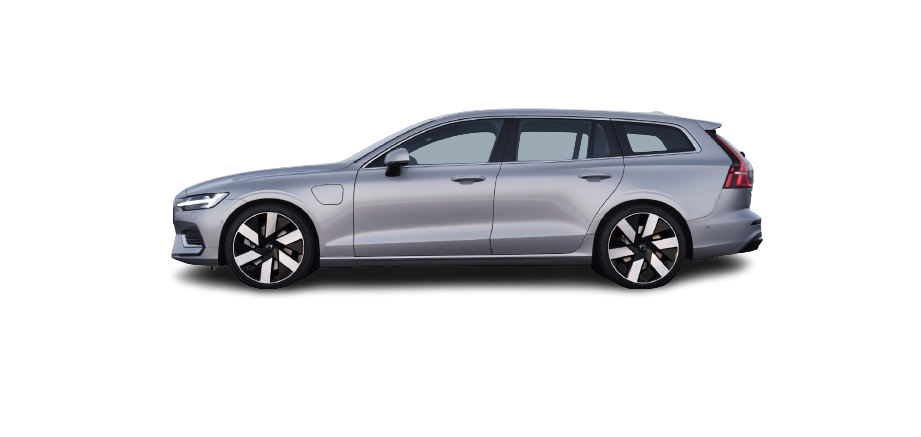2023 Volvo V60 Specifications
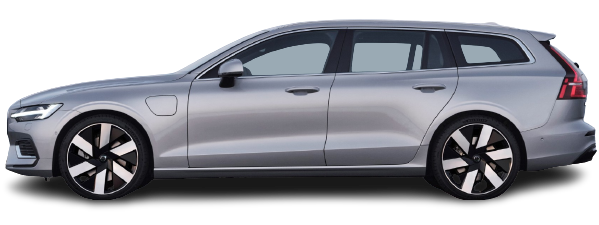
Type designations
Label location
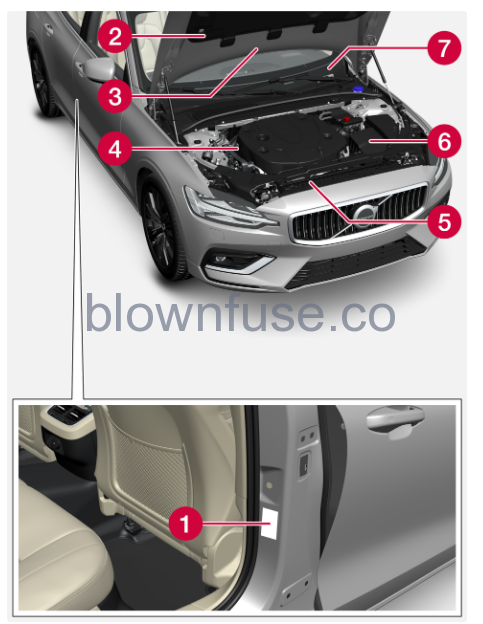
The figure is schematic – parts may vary depending on market and model.
Knowing the car’s type designation, vehicle identification number and engine code can facilitate contact with a Volvo dealer regarding the car and when ordering spare parts and accessories.
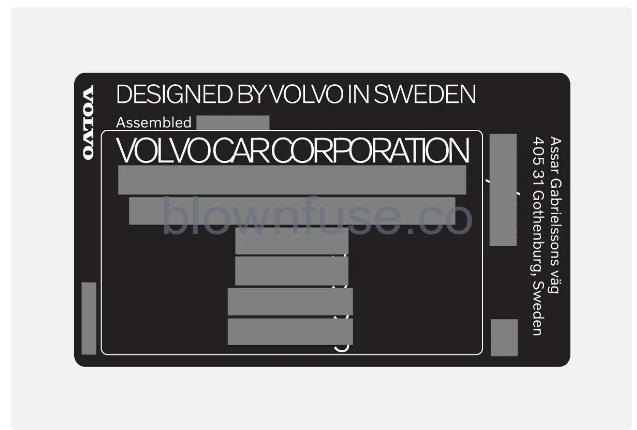
- Decal for type designation, vehicle identification number, permissible maximum weights and code designation for exterior colour and type approval number. The decal is positioned on the door pillar, and will be visible when the right-hand rear door is opened.
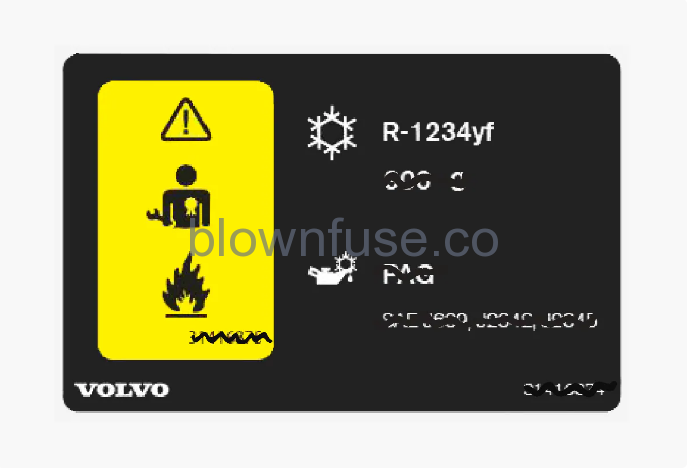
- Decal for A/C system for cars with refrigerant R1234yf. The decal is placed on the underside of the bonnet.
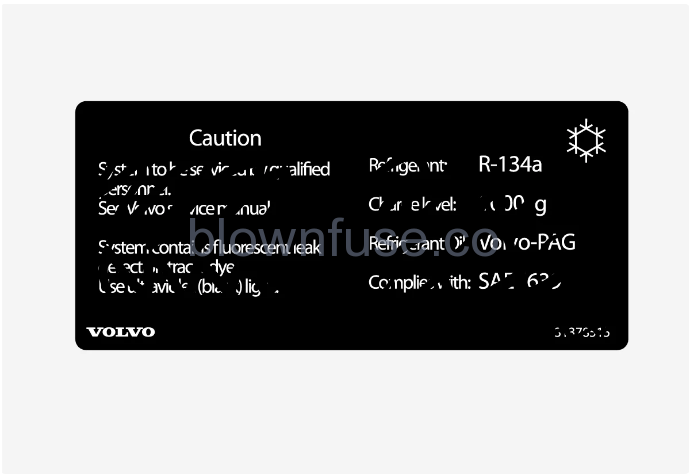
- Decal for A/C system for cars with refrigerant R134a. The decal is placed on the underside of the bonnet.
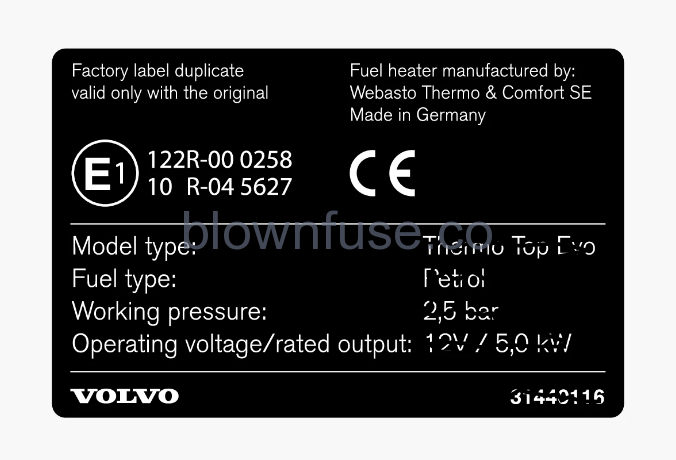
- Label for parking heater.
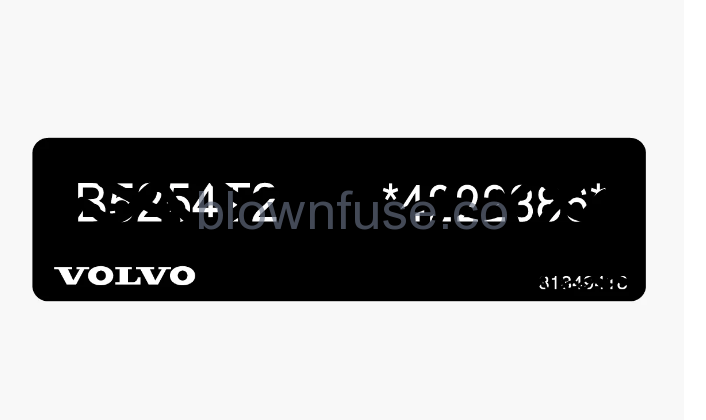
- Decal for engine code and the engine’s serial number. For certain engine alternatives there is no decal. In these cases, the engraved engine code can be read directly on the engine instead.

- Label for engine oil.
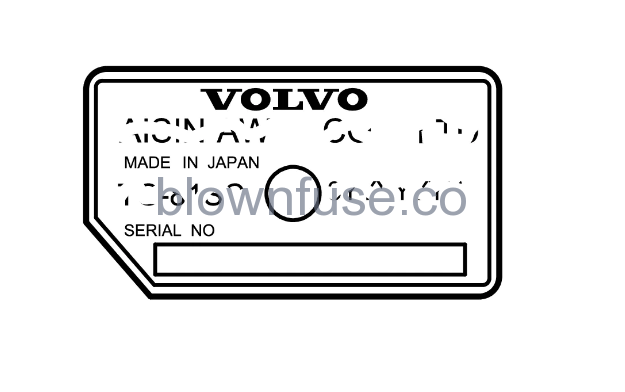
- Decal for gearbox type designation and serial number.
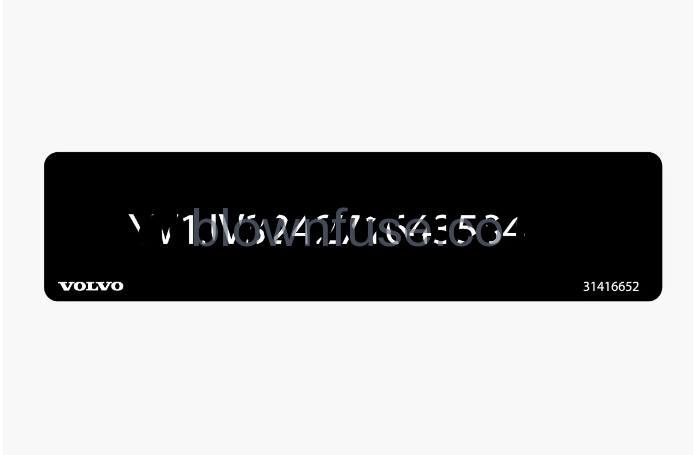
- Decal for the car’s identification number – VIN (Vehicle Identification Number). The decal is located on the top left-hand part of the instrument panel and is visible through the windscreen.
Further information on the car is presented in the registration document.
Note
It is not intended that the decals illustrated in the owner’s manual should be exact replicas of those in the car. They are included to show their approximate appearance and locations in the car. The information that applies to your particular car can be found on the decal on the car.
Note
It is not intended that the decals illustrated in the owner’s manual should be exact replicas of those in the car. They are included to show their approximate appearance and locations in the car. The information that applies to your particular car can be found on the decal on the car.
Fuel consumption and CO2 emissions
Examples of causes of increased fuel consumption include:
- If the car is equipped with extra equipment that affects its weight.
- Driving style.
- If the customer chooses wheels other than those mounted as standard on the basic version of the model, this could increase rolling resistance.
- High speed causes increased air resistance.
- Fuel quality, road and traffic conditions, weather and the condition of the car.
A combination of the examples above could increase consumption considerably.
Note:
Extreme weather conditions, driving with a trailer or driving at high altitudes, in combination with poorer fuel quality than recommended, are factors that considerably increase the car’s fuel consumption.
